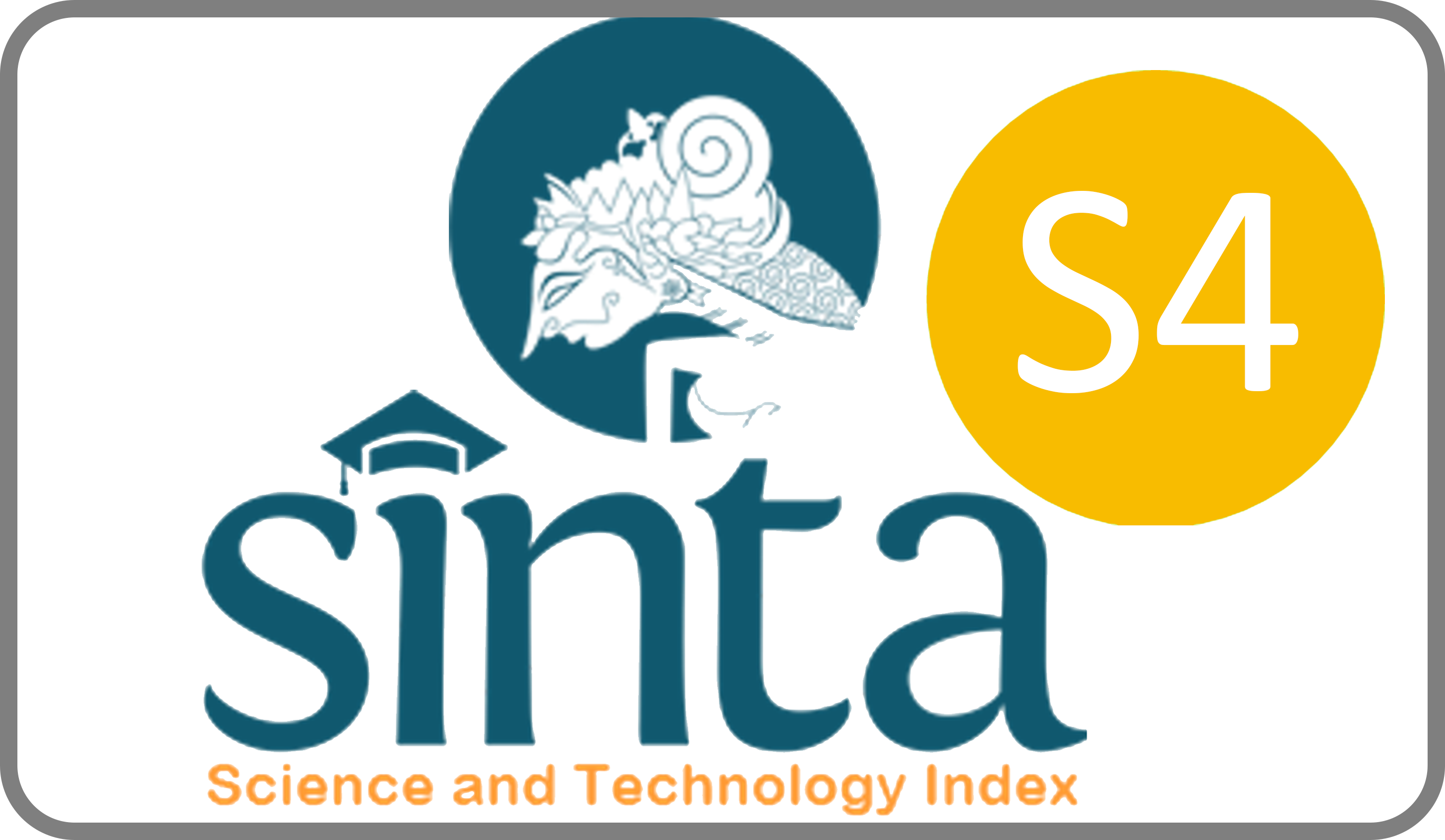THALASSEMIA LITERACY: INCREASING KNOWLEDGE OF ORPHAN ADOLESCENTS ON THALASSEMIA
Downloads
Thalassemia is the most common monogenic disease in Asia, including Indonesia that causes burdens for the government, patients, and families. As the sixth most non-communicable disease, thalassemia utilized IDR 600 billion in 2022 for more than 300 thousand cases. With, 3.8% of Indonesians carrying a mutation of thalassemia on their globin gene, this economic burden is projected will increase if no actions are taken. On the other hand, child marriage is reported to increase every year, including among orphans. Without proper knowledge and genetic testing on thalassemia, child marriage might contribute to the increasing of thalassemia patients. Thus, increasing knowledge on thalassemia among orphan adolescents is important. This community development uses several methods, including seminar, discussion, book, and poster, targeting the orphan adolescents (n= 40) in Mojokerta, East Java. A questionnaire on thalassemia was used to measure the knowledge, before and after the activity. The results show that the respondents have a moderate knowledge about thalassemia (median= 4 (0-9)), and increase to median=9 (3-10)) after the activities (p< 0.001). Even though overall knowledge is increased, several information including thalassemia is a genetic disease, not similar to blood cancer, not the only type of anemia (Q6), and how to diagnose thalassemia (Q9) still need to be emphasized. Taken together, direct and indirect approaches, such as seminar, discussion, book, and poster are effective in increasing thalassemia knowledge among orphan adolescents. These activities are more effective in targeting late adolescents, compared to early and middle adolescents. However, more effective methods are necessary to target Generation Z who are more familiar with the internet.
Aggarwal, Shilpa, et al. "Child Marriage and the Mental Health of Adolescent Girls: A Longitudinal Cohort Study from Uttar Pradesh and Bihar, India." The Lancet Regional Health - Southeast Asia 8 (2023). Accessed 2024/02/10. https://dx.doi.org/10.1016/j.lansea.2022.100102.
Asa, Peter, et al. "Empowering Thalassemia Patients and Family to Increase Public Knowledge on Thalassemia." Education; Health; Online; Questionnaire; Reduced Inequalities; Thalassemia, 2021 7, no. 4 (2021-12-25 2021): 6. https://dx.doi.org/10.22146/jpkm.69349.
Azizah, Khadijah Nur. "Cek! Daftar 10 Penyakit Yang Paling Banyak Sedot Dana Bpjs Kesehatan." detiknews (Jakarta). 18 July 2023, 2023. Accessed 23 September 2023, https://health.detik.com/berita-detikhealth/d-6828672/cek-daftar-10-penyakit-yang-paling-banyak-sedot-dana-bpjs-kesehatan.
Bajwa, Hamza, and Hajira Basit. "Thalassemia." StatPearls. StatPearls Publishing. 2023. https://www.ncbi.nlm.nih.gov/books/NBK545151/.
Cao, A., and Y. W. Kan. "The Prevention of Thalassemia." Cold Spring Harb Perspect Med 3, no. 2 (Feb 1 2013): a011775. https://dx.doi.org/10.1101/cshperspect.a011775.
Chae, S. "Timing of Orphanhood, Early Sexual Debut, and Early Marriage in Four Sub-Saharan African Countries." Stud Fam Plann 44, no. 2 (Jun 2013): 123-46. https://dx.doi.org/10.1111/j.1728-4465.2013.00349.x.
Chu-Ko, Fen, et al. "Exploring the Factors Related to Adolescent Health Literacy, Health-Promoting Lifestyle Profile, and Health Status." BMC Public Health 21, no. 1 (2021/12/01 2021): 2196. https://dx.doi.org/10.1186/s12889-021-12239-w.
Chu, D. T., et al. "Children Orphaned by Covid-19: A Grim Picture and the Need of Urgent Actions." Travel Med Infect Dis 50 (Nov-Dec 2022): 102446. https://dx.doi.org/10.1016/j.tmaid.2022.102446.
d'Arqom, Annette. "Nucleic Acid Therapy for Î’-Thalassemia." Biologics : targets & therapy 14 (2020): 95-105. https://dx.doi.org/10.2147/BTT.S265767.
d'Arqom, Annette, et al. "Online Peer-Group Activism for Thalassemia Health Education During the Covid-19 Pandemic: A Case Study from East Java, Indonesia." Journal of Health Research ahead-of-print, no. ahead-of-print (2021). Accessed 2021/07/06. https://dx.doi.org/10.1108/JHR-09-2020-0442.
d'Arqom, Annette, et al. Talasemia Ditinjau Dari Segi Medis Dan Sosial: Airlangga University Press, 2021a. https://books.google.co.id/books?id=0btHEAAAQBAJ.
d'Arqom, Annette, et al. "Pengembangan Kader Sekolah Menengah Untuk Menurunkan Insiden Thalassemia Di Kabupaten Bulak, Surabaya." Jurnal Layanan Masyarakat (Journal of Public Services) 5, no. 2 (11/24 2021b): 267-73. Accessed 2023/09/28. https://dx.doi.org/10.20473/jlm.v5i2.2021.267-273.
Finaka, Andrean W., et al. "Mayoritas Pemuda Di Indonesia Menikah Muda." indonesiabaik.id. 2023. Accessed 28 September, 2023. https://indonesiabaik.id/infografis/mayoritas-pemuda-di-indonesia-menikah-muda#:~:text=Sebanyak%2030%2C52%25%20pemuda%20laki,ketika%20berusia%2016-18%20tahun.
Irani, Morvarid, and Robab Latifnejad Roudsari. "Reproductive and Sexual Health Consequences of Child Marriage: A Review of Literature." Journal of Midwifery and Reproductive Health 7, no. 1 (2019): 1491-97. https://dx.doi.org/10.22038/jmrh.2018.31627.1342.
Issa, Tomayess, and Pedro Isaias. "Internet Factors Influencing Generations Y and Z in Australia and Portugal: A Practical Study." Information Processing & Management 52, no. 4 (2016/07/01/ 2016): 592-617. https://dx.doi.org/https://doi.org/10.1016/j.ipm.2015.12.006.
Kemenkes. "Angka Pembawa Sifat Talasemia Tergolong Tinggi." Ministry of Health, Republic of Indonesia. 2019. Accessed 27 January, 2023. https://www.kemkes.go.id/article/view/19052100003/angka-pembawa-sifat-talasemia-tergolong-tinggi.html.
Kemenkumham, Undang-Undang Republik Indonesia Nomor 16 Tahun 2019. 2019.
McDougal, Lotus, et al. "Beyond the Statistic: Exploring the Process of Early Marriage Decision-Making Using Qualitative Findings from Ethiopia and India." BMC Women's Health 18, no. 1 (2018/08/24 2018): 144. https://dx.doi.org/10.1186/s12905-018-0631-z.
Nasution, Zamal. "Darurat Perkawinan Anak Di Indonesia (Bagian Pertama)." zonasatunews.com (Surabaya). 4 September 2023, 2023. Accessed 23 September 2023, https://www.zonasatunews.com/terkini/zamal-nasution-darurat-perkawinan-anak-di-indonesia-bagian-pertama/.
Ratzan, Scott, et al. "National Library of Medicine Current Bibliographies in Medicine: Health Literacy." Bethesda, MD: National Institutes of Health (01/01 2000).
Rumble, L., et al. "An Empirical Exploration of Female Child Marriage Determinants in Indonesia." BMC Public Health 18, no. 1 (Mar 27 2018): 407. https://dx.doi.org/10.1186/s12889-018-5313-0.
Thein, Swee Lay. "Molecular Basis of Î’-Thalassemia and Potential Therapeutic Targets." Blood Cells, Molecules, and Diseases (2017/06/20/ 2017). https://dx.doi.org/http://dx.doi.org/10.1016/j.bcmd.2017.06.001.
Wahidiyat, P. A., et al. "Cross-Sectional Study on Knowledge, Attitude and Practice Towards Thalassaemia among Indonesian Youth." BMJ Open 11, no. 12 (Dec 3 2021): e054736. https://dx.doi.org/10.1136/bmjopen-2021-054736.
Wong, L. P., et al. "A Holistic Approach to Education Programs in Thalassemia for a Multi-Ethnic Population: Consideration of Perspectives, Attitudes, and Perceived Needs." J Community Genet 2, no. 2 (Jun 2011): 71-9. https://dx.doi.org/10.1007/s12687-011-0039-z.
Copyright (c) 2024 Danti Nur Indiastuti, Zahras Azimuth Doman, Nurmawati Fatimah, Mhd Zamal Nasution, Annette d'Arqom

This work is licensed under a Creative Commons Attribution-ShareAlike 4.0 International License.
JLM by Unair is licensed under a Creative Commons Attribution-ShareAlike 4.0 International License.
1. The journal allows the author to hold the copyright of the article without restrictions.
2. The journal allows the author(s) to retain publishing rights without restrictions
3. The legal formal aspect of journal publication accessibility refers to Creative Commons Attribution Share-Alike (CC BY-SA).
4. The Creative Commons Attribution Share-Alike (CC BY-SA) license allows re-distribution and re-use of a licensed work on the conditions that the creator is appropriately credited and that any derivative work is made available under "the same, similar or a compatible license”. Other than the conditions mentioned above, the editorial board is not responsible for copyright violation.


















